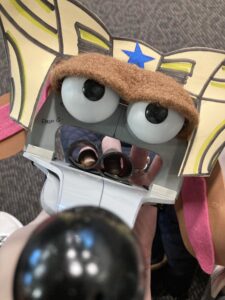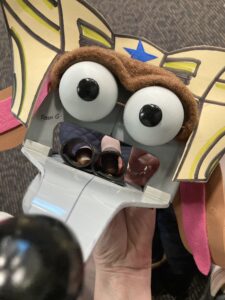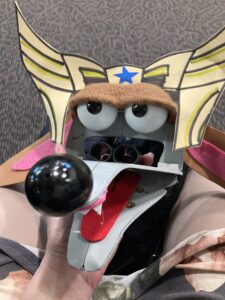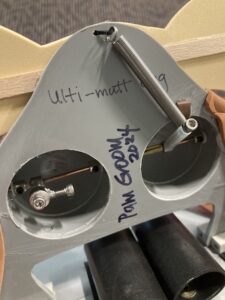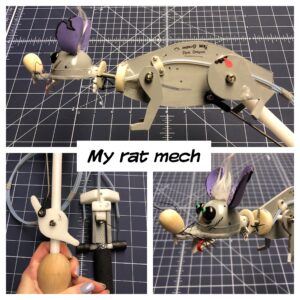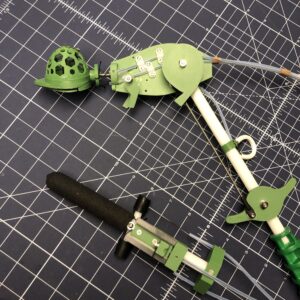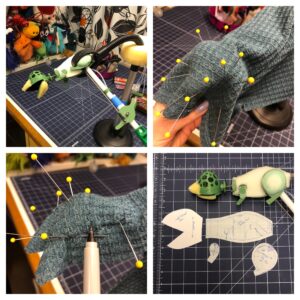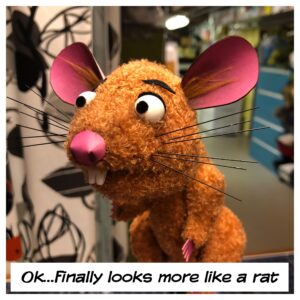Kroupa’s Mech Magic at the O’Neill
Why include a mech (or mechanical element) to a puppet?
Jim Kroupa has worked in puppetry for four decades, so his insight is invaluable to answering this question. He now teaches making mechs for puppets at the O’Neill Puppetry Pre-Conference every year. In his introduction to the class, he explained two reasons to include a mech in your puppet design.
- To enhance emotion.
- To operate a small puppet whose scale doesn’t allow a human hand to operate from the inside.
Using a mech outside of these two goals might add unnecessary complication. It makes the build more expensive and time-consuming. The mech itself might be distracting if it draws unnecessary attention to the mech itself. Rather the goal of the mech should be to enhance the overall performance without being overtly noticeable.
What are good design requirements for a mech in a puppet?
Jim also explained the design elements that make for a good mech. They include creating a design that is:
- Lightweight
- Easy to use
- Has reliable activation and return
- Doesn’t draw attention to itself. Rather it enhances the performance.
Using a Mech for a Small Puppet
Jim Kroupa teaches a new mech every year. Last year (2023) we made small mechanical rats. The rats could move their heads up and down, left and right, and rise on their hind legs. The scale of the puppet is such that a standard hand puppet design was impractical. The mechanical controls became the substitute for the human hand inside the head. When I redesigned my rat after the conference, I also added a moving jaw, so my rat could talk. This design is an example of one of the reasons to add a mech…a small character.
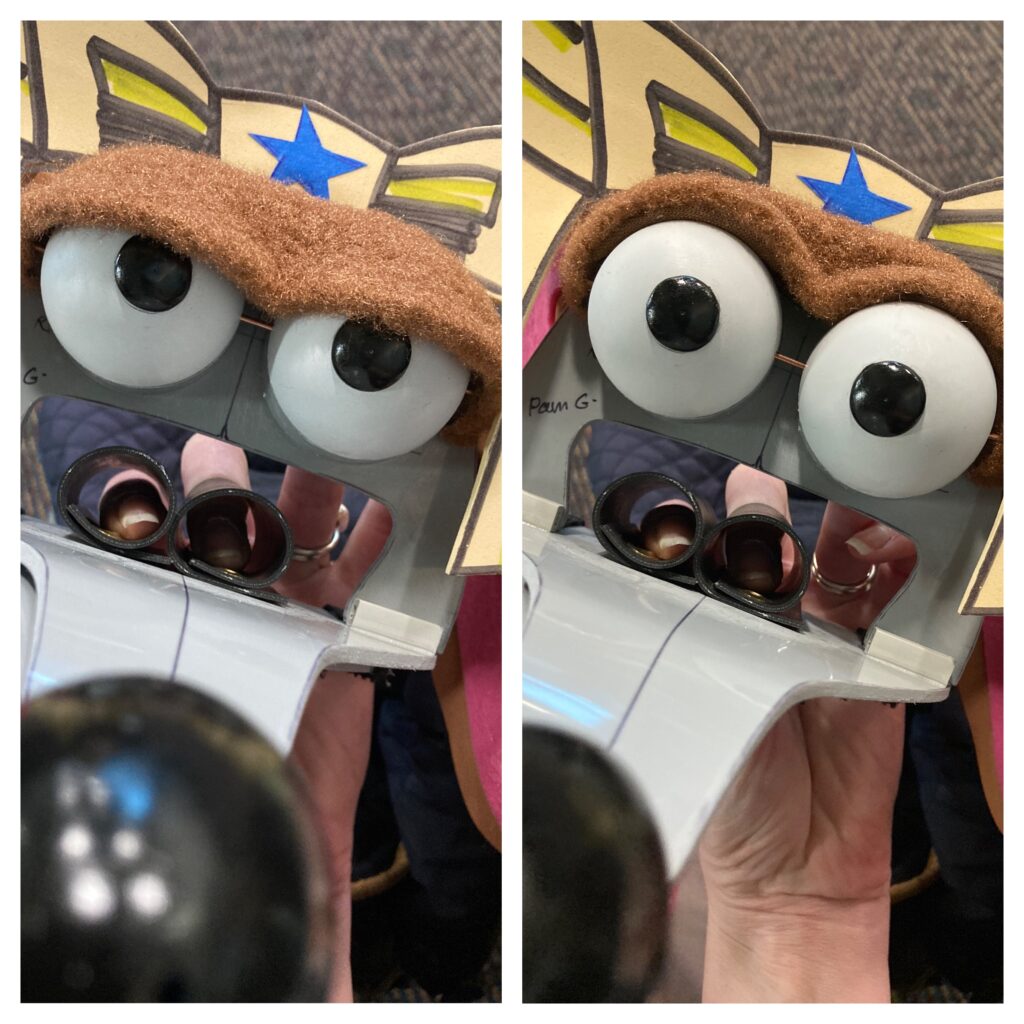
Adding emotion
This year we built a design that used a mech to add emotion. Kroupa taught us how to make an eye widen mech. It has a forefinger activation (versus a mouthplate slide or a trigger on the rod handle) that is elegantly simple. No strings! Here the character can be surprised or excited. If activated with a few quick pumps, it reads as a flirty eyebrow raise.
Eye widen versus Eye blink
Usually, when a client requests an eye mech, they request an eye blink. There were plenty of eye blink designs amongst Jim Kroupa’s samples at the conference. There was even a double eyelid blink! The common reason this is requested is to add life and realism. The puppeteer can achieve this without the use of a mech. Have you noticed that when you turn your head you often blink? The puppeteer can turn the puppet’s head and the audience will assume the blink! If the puppet is going to sleep, there are plenty of options for faking closed eyes. The puppet can lie down and turn away from the camera (back to camera), or the puppet’s head can nod down if falling asleep seated.
The eye-widen mech, on the other hand, adds emotion. Adding emotion was one of Kroupa’s reasons for adding a mech. It can add to the performance more powerfully than the eye blink.
Want to learn from Jim Kroupa?
Interested in learning from Jim Kroupa? Visit the O’Neill site here, and sign up for updates. https://www.theoneill.org/pup
There is an application process. Applications are generally accepted starting in January and the conference is early June.
Want to read more about mechs on my blog?
Try this blog about last year’s conference. https://www.lapuppets.com/grogu-mechanical-puppet-with-internal-arm-rods/

